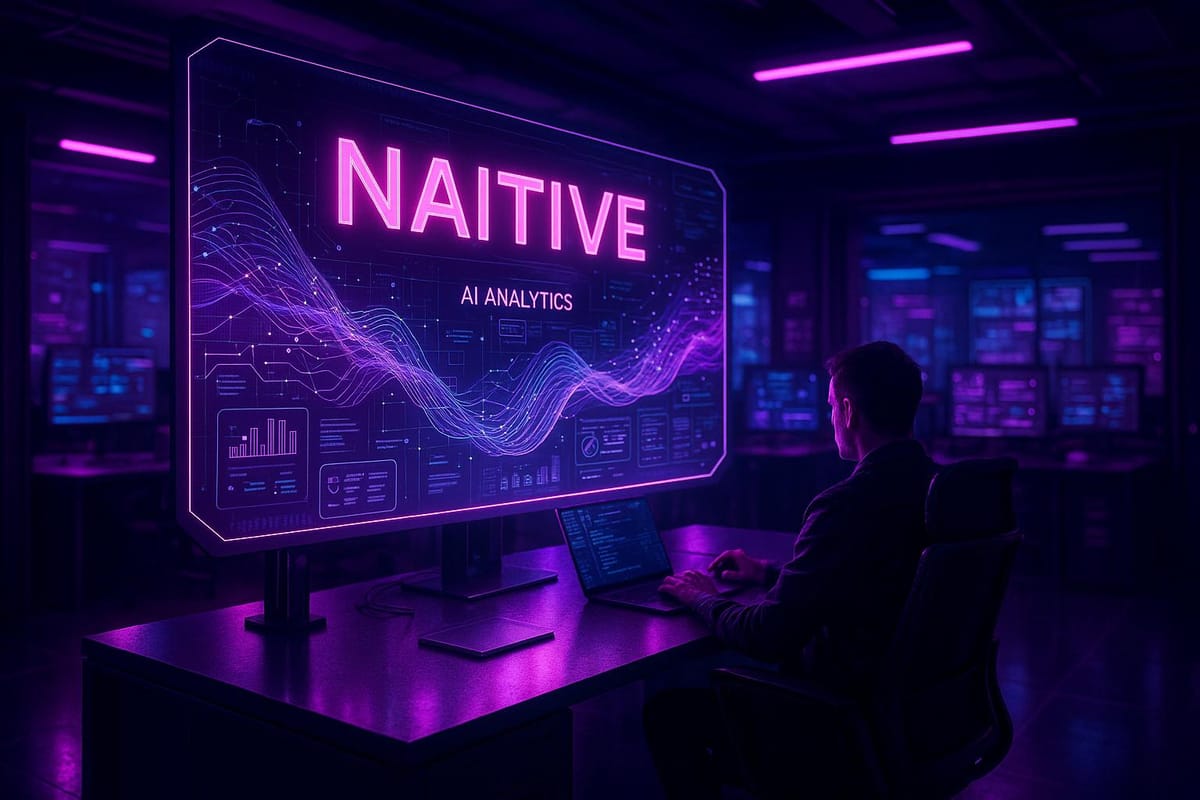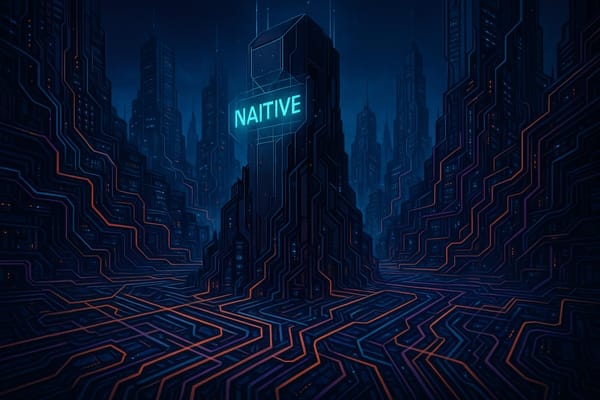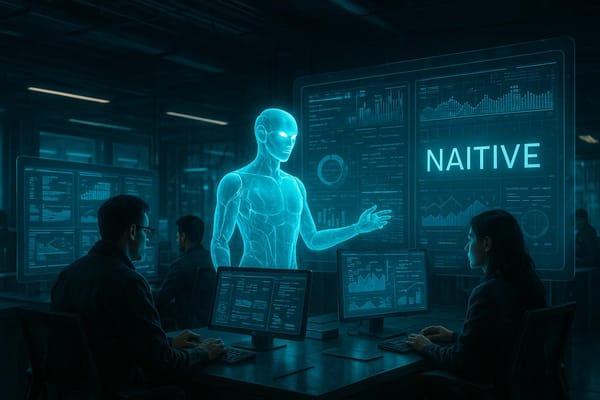How Level 3 Autonomous Enterprise AI Works
Learn how Level 3 Autonomous AI transforms enterprise workflows, improves decision-making, and enhances efficiency.

In an era where technology continuously reshapes industries, enterprise AI is rapidly evolving, offering businesses unprecedented opportunities to improve efficiency, streamline processes, and innovate. The concept of "Level 3 Autonomous AI" represents a significant leap in how organizations leverage AI to operate more effectively. This article explores the key principles, challenges, and possibilities discussed in the video presentation by Leonard Mongi, offering practical insights for business leaders and AI enthusiasts alike.
Introduction: Reimagining Work with AI
Imagine a workplace where tedious, repetitive tasks are handled effortlessly by intelligent systems, freeing up valuable human capital to focus on creativity, strategy, and innovation. This vision is becoming a reality with the rise of Level 3 Autonomous Enterprise AI, which empowers AI agents to handle complex tasks with minimal human intervention. Leonard Mongi, the presenter, passionately illustrates how organizations can integrate these systems into their operations, using AI as a "co-pilot" to enhance productivity and decision-making.
This article delves into the evolution of AI autonomy, use cases transforming industries, practical demonstrations of AI agents in action, and the limitations and mitigations critical for responsible adoption.
The Evolution of Enterprise AI Autonomy
To understand the capabilities of Level 3 Autonomous AI, it's essential first to explore how AI autonomy has evolved. Mongi draws an analogy to the development of autonomous vehicles, providing a clear framework for understanding the incremental stages of AI in workplaces:
Levels of AI Autonomy:
-
Level 1: Rule-Based Systems
Early automation relied on deterministic workflows such as "if X happens, do Y." These systems lacked flexibility and were only suitable for highly repetitive tasks. -
Level 2: Machine Learning Enhancements
With the introduction of machine learning, systems could analyze historical data and make predictive decisions. This evolution allowed for basic logical reasoning but still required substantial human oversight. -
Level 3: Autonomous Agents (The Present)
AI agents now act as co-pilots, capable of decision-making based on context, selecting tools, and completing tasks with limited human guidance. These agents can collaborate with humans to enhance recruitment, data analytics, customer service, and more. -
Future Levels (4 and 5): Semi- and Full Autonomy
Levels 4 and 5 promise agents that can set their own goals, adapt dynamically to outcomes, and even collaborate independently with external systems. These advancements, while still in development, are expected to dramatically reshape industries.
Practical Applications of Level 3 Autonomous AI
Mongi presents clear use cases where Level 3 AI autonomy is already driving value in various industries. Here's how businesses can utilize these systems:
1. Recruitment and Onboarding
AI agents streamline hiring processes by:
- Identifying qualified candidates from databases with a scoring system.
- Reviewing online profiles to validate credentials.
-
Automating interview scheduling and communication.
Agents like the demoed recruiting agent can reduce hours of manual work to minutes, allowing organizations to focus on selecting top talent.
2. Customer Service and Support
AI agents enhance customer engagement by:
- Using natural language processing to respond to inquiries via email, chat, or phone.
- Escalating issues to human representatives when needed.
- Tracking customer history for personalized interactions.
3. Operations and Workflow Automation
By automating repetitive processes, AI agents:
- Monitor calendars and schedule meetings.
- Integrate with enterprise tools like Microsoft Teams for seamless collaboration.
- Execute backend tasks, such as creating accounts or managing data access.
4. Predictive Analytics for Decision-Making
AI utilizes historical and real-time data to:
- Predict trends and future outcomes.
- Identify potential risks or opportunities in business operations.
- Drive actionable insights through advanced data visualization tools.
These use cases demonstrate how Level 3 AI autonomy enables organizations to focus on strategic goals rather than administrative burdens.
Overcoming Challenges: Limitations and Mitigation Strategies
While transformative, the integration of autonomous AI systems comes with challenges. Mongi highlights several limitations and offers strategies for safely and effectively adopting these systems:
Limitations of Current AI Systems:
-
Simulation of Intelligence
Current AI operates by recognizing patterns and making predictions based on historical data. It doesn’t yet exhibit true creativity or independent reasoning. -
Data Quality Concerns
AI performance depends on the quality of data provided. Poor data yields inaccurate or misleading results. -
Lack of Common Sense and Ethical Judgment
AI lacks contextual understanding and empathy, which can result in errors like misjudging a candidate's suitability for a role or failing to account for unforeseen circumstances, such as extreme weather. -
Hallucination and False Information
AI systems, especially those using large language models, may generate inaccurate or fabricated responses, requiring human oversight to verify outputs.
Mitigation Strategies:
-
Human-in-the-Loop Systems
Maintain human oversight in critical decision-making processes to ensure ethical and accurate outcomes. -
Multi-Agent Systems
Distribute tasks among specialized agents rather than relying on a single AI system. This approach minimizes downtime, ensures accuracy, and offers redundancy. -
Rigorous Validation Processes
Integrate agents that validate the outputs of other agents, creating a checks-and-balances system. -
Transparent Frameworks
Ensure traceability of AI decisions by documenting how outputs are generated, enabling organizations to audit and refine processes. -
Controlled Randomization (Stochasticity)
Use temperature controls to manage the degree of randomness in AI-generated outputs. This ensures responses are either deterministic or creative, based on the organization’s needs.
The Future of Enterprise AI: Toward General Intelligence
As organizations embrace Level 3 autonomy, the horizon is marked by the pursuit of Artificial General Intelligence (AGI). This future state envisions AI systems that autonomously set goals, adapt continuously, and collaborate across organizations without human intervention. However, Mongi emphasizes the need for responsible development to ensure transparency, ethical considerations, and human-centric designs.
Key Takeaways
- AI as a Co-Pilot: Level 3 Autonomous AI acts as a partner in decision-making, handling repetitive tasks to free up human creativity.
- Use Cases in Action: Recruitment, customer service, and workflow automation showcase significant efficiency improvements.
- Challenges Exist: AI systems face issues like data quality, ethical concerns, and lack of common sense, necessitating careful implementation.
- Mitigation is Key: Multi-agent systems, human oversight, and robust validation processes ensure reliability and transparency.
- Future Promise: Emerging advancements in AI autonomy could redefine industries, but responsible adoption is essential.
Conclusion: Preparing for the Autonomous Future
Level 3 Autonomous Enterprise AI offers organizations the tools to reimagine how work gets done. By leveraging AI agents as "digital co-pilots", businesses can streamline operations, enhance customer experiences, and make data-driven decisions faster than ever before. However, as Mongi aptly points out, responsible adoption requires a balance of innovation and caution - ensuring AI systems are transparent, ethical, and designed to complement human ingenuity.
As the evolution toward AGI continues, organizations should prepare by experimenting with use cases, adopting hybrid systems, and fostering a culture of collaboration between humans and AI. The genie is out of the bottle, and how we manage it will determine its impact on the future of work.
Source: "How Level 3 (Fully Autonomous) Enterprise AI Applications Work" - Armely, LLC, YouTube**, Aug 29, 2025 -** https://www.youtube.com/watch?v=DKl-7hTIUis




